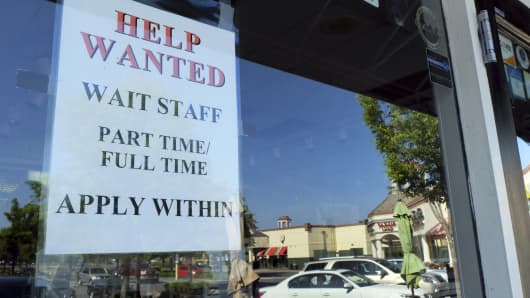The shift from higher- to lower-paying jobs comes as the economy enters its fifth year of one of weakest recoveries on record. Without stronger growth, there is little pressure on employers to raise wages, according to Michael Evangelist, author of the study.
"Low-wage workers are very easy to bring on and very easy to let go," he said. "So you need strong economic growth to boost these mid- and high-wage industries and increase hiring there."
Read More The 10 worst jobs for 2014
While the overall level of U.S. employment has recovered, job growth has been weakest in some of the highest-paying industries, like construction. Meanwhile, job creation has been strong in lower-paying jobs in health care and food services,
The Senate is set to begin debate on a bill to raise the federal minimum wage to $10.10 an hour, in three steps, by 2016.
The measure would boost earnings from some 28 million of the lowest paid of American workers, who have been steadily losing ground to a variety of economic and political forces since the 1970s.
Read MoreIt's about the jobs, stupid!
The Fair Labor Standards Act of 1938 established the hourly minimum wage rate at 25 cents for covered workers. Since then, it has been raised 22 times, in part to keep up with rising prices. The latest boost, in July 2009, brought it to $7.25 an hour or about $15,000 a year for a worker putting in 40 hours a week.
Proponents of the higher minimum wage, including NELP, contend that fatter paychecks would help boost overall economic growth by increasing consumer spending.
Read More Why millennials have a tough time landing jobs
Opponents of a higher minimum wage, supported by a number of economic studies, contend that it would eliminate the very entry-level jobs that low-skilled workers need the most.
Some 22 states and the District of Columbia have set their own wage floor higher than the federal standard. But the latest effort to create a national minimum of $10.10 an hour appears to be headed for defeat. Though the measure is supported by Democrats, few Republicans are expected to support it, leaving it short of the 60 votes needed for approval.
"It looks like these jobs are here to stay," said Evangelist. "They're becoming an increasingly large percentage of the labor force and the economy."



